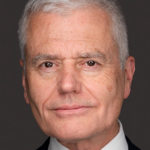Habitable Worlds Observatory mission aims to find answer: Is life unique?
Experts involved with development of one of NASA’s astrophysics flagship missions, the Habitable Worlds Observatory (HWO), offer insight into the inspiration and motivation behind the historic project in this panel discussion at the 39th Annual Space Symposium. They also outlined mission goals and progress to date toward concept execution.
Moderator Jason Kalirai, mission area executive for civil space at Johns Hopkins University Applied Physics Laboratory, cited the mission’s designation as the number one large-scale priority of the National Academies Astronomy and Astrophysics Decadal Survey. The project revolves around the development and construction of a large optical telescope designed and engineered specifically to find and identify other habitable planets or “Earth 2.0,” remarked Sara Seager, MIT.
Project leaders Mark Clampin and Lee Feinberg of NASA, and Martin Frederick, Northrop Grumman, elucidated how HWO builds on exponentially improved science, technology, and testing models gained, as well as lessons learned, from other missions, particularly the James Webb Space Telescope.
The panelists stressed that the success of HWO would hinge on the contributions made by individuals, from all levels, from within many organizations all over the world. As part of that community of expert contributors, panel members Julianna Scheiman, SpaceX, and Tiffany Wong Hall, Blue Origin, provided details about how each of their companies will be able to provide the lift and carrying capacity to launch HWO into its planned orbit.
In summing up, Frederick said, “After Habitable Worlds is launched and successful, there will be an even more inclusive worldwide view of things. It is going to take not just a village; it is going to take a globe to do something as magnificent as Habitable Worlds Observatory.”






